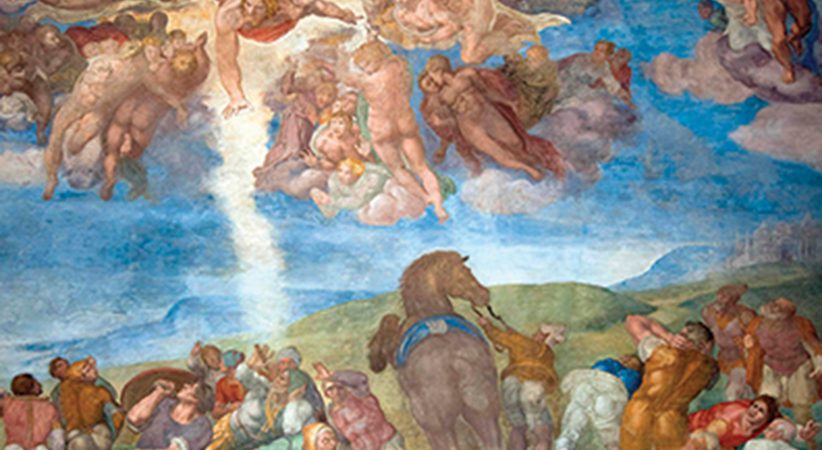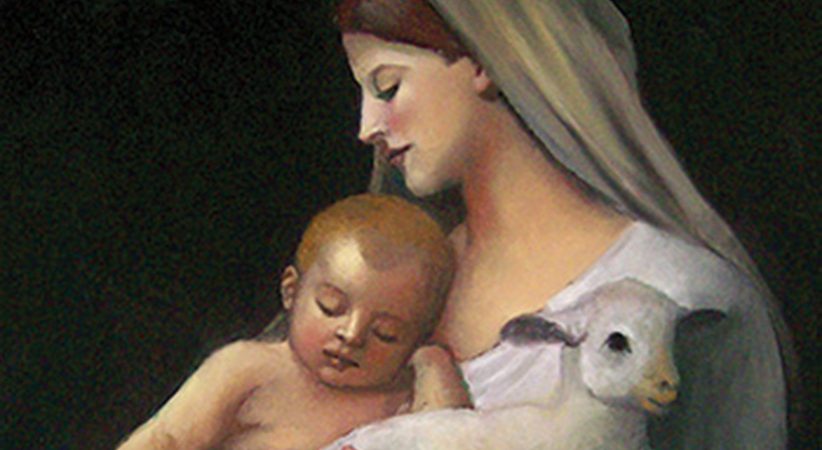Adapting to Transitions
While rarely easy, transitions can be a blessed part of the lives of priests
Father David Songy Comments Off on Adapting to Transitions
The life of a priest means a life of change: ordination, first parish assignment, appointment as a pastor, assignments to new parishes or ministries and, eventually, retirement. Some changes we seek, and others we seek to accept as part of our vocation and promise of obedience. Yet even when we welcome our transitions, change can be physically, psychologically and spiritually challenging. We like to be in control and feel secure. Change reminds us that we are vulnerable. Our expectations and our reality may clash.
Every transfer from a parish feels like a separation as a community — a family — is left behind.
A new parish, no matter how welcoming, will be a different experience, with new people and customs to navigate. Even a change in bishop, for a priest who has experienced his ordinary as a true father, may bring sadness for the loss and uncertainty about the relationship yet to be developed with the new bishop.
Change and Transition
A change is an external event that affects our outward behavior and might occur suddenly. Transition is internal — the psychological, emotional and spiritual process of adapting to a change. A transition may take place over weeks, months or even years.

A new assignment is a change. The transition is what follows: the struggle to unplug from the former situation, to reorient oneself to new circumstances, to redefine ourselves and to fully incorporate the change into our lives.
Our goal should not be to accommodate or simply put up with change; our goal should be to become a better person because of it. As Blessed John Henry Newman said, “To live is to change; to be perfect is to have changed often.”
William Bridges, author of “Transitions: Making Sense of Life’s Changes” (Da Capo Press, $15.95), says, “Without a transition, a change is just a rearrangement of the furniture.”
Bridges offers a simple structure for understanding transition. He identifies three stages: Endings, Neutral Zone and New Beginnings. Every change leads to the end of an old situation, followed by a period of confusion and distress (the neutral zone) and, finally, a new beginning.
Knowing our individual internal process for each stage of transition helps us to respond appropriately and to be patient when nothing can be done to hurry the transition process along.
Finding God in Transition
Bridges’ three stages of understanding transitions can be illustrated by three simple examples: falling off a cliff, treading water and finding shore.
Falling off a cliff is the first stage, which he refers to as “Endings.” Every transition begins with an ending. This can feel like a rocky descent. One loss, such as the termination of a ministry position, often leads to other losses: relationships, office and living space, status and confidence in one’s abilities.
The second stage, the Neutral Zone, is a period of confusion and distress. We may feel that we are treading water, drifting aimlessly or perhaps riding the rapids. We can swim in many directions, but we never seem to make it to shore.
The third stage is the New Beginning. We realize that we have come near to shore and can walk on solid ground again. This image of crossing water should sound familiar to us from reading the Scriptures. Jesus crossed over the Sea of Galilee more than once. Author Wilkie Au uses this image for transition in his book “The Enduring Heart” (Paulist Press, $18.95). “The biblical image of crossing the lake symbolizes all the transitions we make in the journey through life. Transitions entail leaving familiar and solid ground (terra firma) and embarking on unknown terrain, like the unpredictable and storm-prone Lake of Galilee, and enduring an in-between place before reaching solid ground once again on the other shore.”
Transition can be a truly spiritual experience if we take the opportunity to reflect on our lives, noticing the action of God in moments of change. Transition challenges us to be humble at this particular moment in life and cede control to God, who molds us in the image of Christ.
Stage One: Letting Go
Every transition begins with an ending. An assignment ends, a close friend dies, we become ill. A ministry we began many years ago has changed to the degree that we want to move on.
Bridges writes: “Endings are … experiences of dying. They are ordeals, and sometimes they challenge so basically our sense of who we are that we believe they will be the end of us.”
…………………………………………………………………………………………………………………………………………………………………………………………………………………….
5 common types of loss
Ministry change: An assignment might be for a specific time frame or because of a transfer or parish closure or merger.
Financial change: Some parish assignments offer better financial perks. Retirement pension policies vary, and sometimes nonrectory housing is difficult to afford in retirement.
Relationship loss: Death, conflict, physical distance, new demands created by a change in ministry or neglect can result in lost relationships.
Personal change: Physical illness, mobility and memory problems associated with aging affect priests at various stages of life.
Inner change: Our spiritual life has ebbs and flows. A busy young priest may feel he has less time to pray, while middle-aged priests may discover that they no longer know how to engage in contemplative prayer. Different moments involving spiritual awakenings or deepening social awareness change how we look at the world.
……………………………………………………………………………………………………………………………………………………………………………………………………………………..
However, endings are not the end but the beginning of the transition process — and they are necessary for growth. According to Bridges, “Endings are the first, not the last, act of the play.”
Certain skills help us negotiate endings, including:
◗ Recognize the ambiguous nature of “letting go.” Change is neither all fun nor all painful. To say “goodbye” is both sad and freeing.
◗ Identify the subjective losses. We may experience less independence, security or control. To have to follow another person’s lead may wound our pride. Sometimes the subjective loss is more painful than the loss of a position or title.
◗ Appreciate the grieving process. Elisabeth Kübler-Ross’ five stages of grieving — denial, anger, bargaining, depression and acceptance — offer a helpful model for dealing with significant loss. Experiencing grief is not an overreaction.
◗ Reflect on our personal style of coping with endings. Do we stop abruptly and avoid saying goodbye? Our responses tend to be influenced by our experience with previous endings or how our families coped with loss, yet these may not be healthy for us.
◗ Recognize internal resistance. We may avoid goodbyes or drag out an ending for unconscious reasons. Speaking with a spiritual director or participating in healthy goodbye rituals — such as celebrations of what has been, prayer services and a review of life — can be quite healing.

Stage Two: Confusion and Distress
The Neutral Zone — as illustrated by treading water — provides time for inner reorientation. We are not yet ready internally for a truly new beginning. There is inner work to do.
William Bridges writes that we should not rush through this stage, as we need time to be still and find our bearings. He suggests the following activities to help center ourselves as we continue on in our transitions: find a regular time and place to be alone; begin a log of neutral-zone experiences, not keeping a diary but journaling about significant incidences; write your autobiography; think of what would be unlived in your life if it ended today; take a few days to go on your own version of a passage journey.
Priests are already familiar with practices similar to what Bridges suggests, which focus more directly on spiritual and psychological growth. These include spiritual direction and therapy; classes in either spiritual journey or psychological development/emotions; right-brain expression such as art, music or dance; familiar prayer forms, including centering prayer, meditation, lectio divina, chant or simply being still; and a focus on self-care activities such as exercise, sleep, healthy eating, leisure and fostering relationships.
Interpersonal challenges also may be significant during this period of unrest, but there are things we can do to cope during this time of transition.
◗ Surrender: Do not be afraid of emptiness, and do not struggle to escape it. Say “yes” to the reality.
◗ Be patient: Go with the flow.
◗ Resist the temptation to blame, project or objectify: Try to avoid getting into thinking that others are doing this to make you suffer, but rather that we are all suffering together, trying to find our way.
◗ Treat the past with respect.
◗ Reflect on spiritual memorials, experiences in which you absolutely knew God was present in your ministry to others.
◗ Affirm and encourage others.
◗ Share how you feel. Others will be relieved to know they are not the only ones struggling.
◗ Mind your manners, and your angers, fears, losses and disorientation.
Stage Three: A New Beginning
We know once we have physically arrived at a new parish assignment that we have begun anew, but when does our inner transformation really begin?
According to Bridges, “Genuine beginnings depend on an inner realignment rather than on external shifts, for it is when we are aligned with deeper longings that we become powerfully motivated.” In the Christian tradition, we speak of conversion as turning our focus toward Jerusalem and all its blessings.
……………………………………………………………………………………………………………………………………………………………………………………………………………………..
Recognizing God
One great account of transition in Scripture is the story of the disciples on the road to Emmaus. They felt quite discouraged as they walked along and did not even recognize that the stranger joining them was Jesus. However, after sharing their woes and listening, they were eager to have him stay with them. Eventually, “they recognized him in the breaking of the bread.” They saw that there was life after death and were so moved they ran back to Jerusalem to share this good news with others.
In fact, many of the Resurrection accounts speak of faithful disciples who do not recognize Christ at first: Mary Magdalene in the garden, the disciples fishing, etc. We have really arrived at a New Beginning when we recognize God present in the new stations of our lives.
……………………………………………………………………………………………………………………………………………………………………………………………………………………..
A priest who has moved from a favorite pastoral assignment to an entirely different kind of ministry and discovered tremendous happiness tends to inspire others because they show us what happens when one passes through the Neutral Zone and lands happily on another shore.
We cannot make a beginning happen, but Bridges says there are things we can do to support the process. As we are arriving at the new assignment, learning the new names of the various people who serve and the different responsibilities to take on in this new setting, we can:
◗ Just do it. Do not hesitate by considering every possible option, but push forward. Complete tasks that you have been avoiding: visiting the new parish school or meeting with the parish finance council chairperson.
◗ Identify yourself with the goals. Take on everything with an attitude of “I can do this.”
◗ Don’t second-guess yourself. Resist the little voice that tells you to take some other road. Our first guesses are almost always on target. Don’t worry if it takes time to feel comfortable and sure about your decisions. “Give it a year” is excellent advice to the newly ordained or to the new pastor. It is still good advice for the priest in transition.
◗ Focus on specific, concrete goals. Do not preoccupy yourself with final results during the early stages of a new project. Work toward small successes. Take things gradually, and within a year the progress will be evident.
◗ Be gentle with yourself.
◗ Above all, be thankful.

A Lifetime of Transitions
The transition cycle reoccurs throughout life. Bridges notes two major transitions affecting us over the course of a whole lifetime. The first is the transition from dependency (as a child or a novice) to independence and freedom. The second is the move from independence and freedom back to interrelatedness, interdependence and dependence. In marriage, an individual moves from relative independence to interdependence. In the priesthood, we may experience a loss of relative independence when leaving full-time ministries, taking on a new position, addressing a loss of health or retiring.
Acedia
In the Christian tradition, all transitions are not only a circular process but a linear one as well, leading us toward the fullness of salvation that God desires for each of us. A reflection on acedia can be helpful in understanding the purpose of transition in the process of spiritual development.
|
When a Pastor Leaves:
Responding in Charity
|
|---|
 When it’s time for a pastor to leave a parish,
it can be a difficult transition. This pamphlet
helps guide parishes through such a transition.
— Available in English and Spanish at
OSV.com/Shop ($16.95 for package of 50)
|
Acedia can be translated from Latin as “lack of care.” One of the more ancient usages refers to the act of not burying the dead, which would have been a very uncharitable attitude. Eventually, the term was used by Evagrius Ponticus, a fourth-century monk, to refer to a lack of care for one’s spiritual life or lack of concern for one’s salvation. St. John Cassian spoke of acedia as a lack of impetus to work. St. Benedict wrote about those not persevering during lectio divina as suffering from acedia. Each of these spiritual masters viewed acedia as an attitude of not caring, which affects the spiritual life. Acedia has the popular contemporary meaning of being a “midlife crisis” or a spiritual version of depression.
However, Thomas Aquinas offered another insight. Instead of describing acedia as a life stage or lack of energy, he spoke of it as “sadness about a spiritual good.” Why would a person be sad in front of a spiritual good? According to Aquinas, we may see certain spiritual goods as evil because we are being invited to renounce other goods that seem more concrete and immediately attainable.
Transition offers us an excellent example. Transition is often an invitation to something richer and deeper in meaning. We often know there is a reason for a change, though we do not always consider it a true spiritual good and, therefore, we resist. This leads to Aquinas’ second description of acedia: “disgust with activity.”
What perfectly actualizes the human person is a perfect act, or beatitude. Our spiritual journey consists of steps that either bring us closer to God or that distance us from it. The young seminarian envisions a life that is increasingly virtuous and ever closer to God. The experienced priest often goes through an experience of acedia, during which he may experience a sense of irritation with apparently unceasing challenges that never seem to result in the development of true virtue.
The doubt arises: “Is this a waste of time?” In the case of transition, the temptation is to think that it will cost much effort and result in little grace. We can begin to think that we are unworthy of grace and are disappointed in our lack of zeal. We may get discouraged, engage in gossip or other inappropriate activities.
According to Aquinas, it is more helpful to consider acedia as a vice or sin, because we are not simply caught up in a moment of spiritual sloth but are confronting a challenge to grow in virtue.
Virtue is the capacity to act in profound conformity with God’s will. The one who acts virtuously becomes virtuous.
A transition offers a priest the opportunity to learn over time the truth of his limited perspective and to become less satisfied in himself; in short, to grow in spiritual humility.
FATHER DAVID SONGY, OFM Cap, is a clinical psychologist and president of Saint Luke Institute, the international treatment and education center for Catholic clergy and religious.





